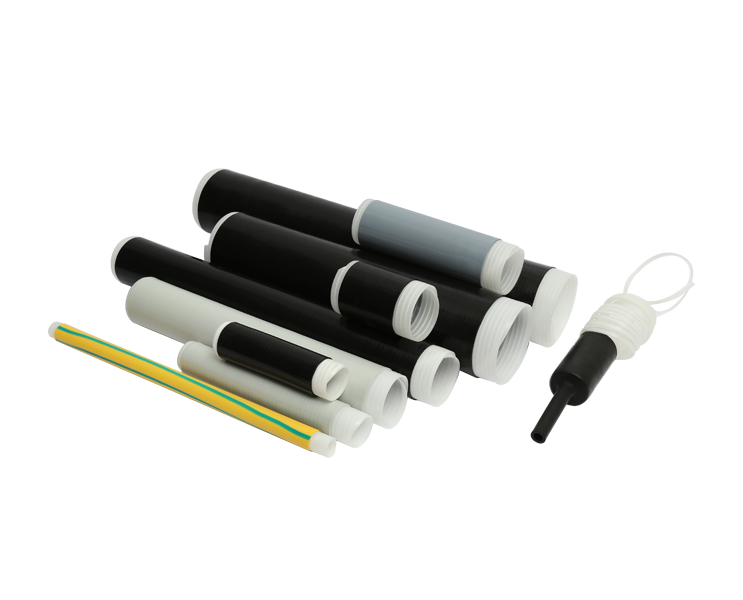In the world of electrical and telecommunications industries, the need for reliable and efficient insulation solutions is paramount. One such innovation that has gained prominence in recent years is the Cold Shrink Tube. This versatile product offers a wide array of benefits and finds applications across various sectors, ranging from power distribution to telecommunications. In this article, we will delve into the remarkable features of Cold Shrink Tubes and explore their diverse applications.
Understanding Cold Shrink Tubes
Cold Shrink Tubes are a type of cable accessory designed to provide reliable insulation and protection to cables and connectors. What sets them apart from traditional heat shrink tubes is their installation process. Unlike heat shrink tubes, which require heat for contraction, Cold Shrink Tubes are pre-expanded and simply need to be unwound and slid over the cable or connector. As they naturally shrink to their original size, they create a tight seal, ensuring a secure and waterproof connection.
Key Features of Cold Shrink Tubes
Ease of Installation: The most prominent feature of Cold Shrink Tubes is their effortless installation process. This eliminates the need for specialized heat guns or open flames, making them an ideal choice for applications where safety is a concern. All that is required is to remove the supporting core, allowing the tube to shrink and provide a snug fit. Excellent Insulation: Cold Shrink Tubes are renowned for their exceptional insulation properties. They are typically made from high-quality silicone rubber, which offers excellent electrical insulation, protecting cables and connectors from moisture, dust, and other environmental factors. Weather Resistance: These tubes are designed to withstand harsh environmental conditions, including extreme temperatures, UV radiation, and ozone exposure. This makes them suitable for both indoor and outdoor applications.
Flexibility: Cold Shrink Tubes are highly flexible, allowing them to conform to irregular shapes and contours. This feature is especially advantageous when insulating complex cable joints or terminations. Durability: The materials used in Cold Shrink Tubes are known for their durability and longevity. They are resistant to aging and do not degrade over time, ensuring that the insulation remains effective for years. Wide Temperature Range: Cold Shrink Tubes maintain their integrity across a broad temperature range, making them suitable for use in environments with extreme temperature fluctuations.
Applications of Cold Shrink Tubes
Telecommunications: Cold Shrink Tubes are extensively used in the telecommunications industry to protect and insulate cable connections, splices, and terminations. They provide a reliable barrier against moisture and contaminants, ensuring uninterrupted signal transmission. Power Distribution: In the field of power distribution, Cold Shrink Tubes play a critical role in maintaining the integrity of cable joints and terminations. They are commonly used in substations, transformers, and outdoor installations to safeguard against electrical faults and environmental factors. Data Centers: Data centers rely on Cold Shrink Tubes to secure and insulate network cables and connectors. The ease of installation and high-performance insulation properties make them an ideal choice for this critical application. Renewable Energy: The renewable energy sector, including wind and solar farms, benefits from Cold Shrink Tubes for their ability to protect power cables and connections in demanding outdoor conditions.
Oil and Gas Industry: In the oil and gas industry, Cold Shrink Tubes are used to insulate and protect cables and connectors in hazardous environments. Their resistance to chemicals and extreme temperatures makes them invaluable in these applications. Railways and Transportation: Cold Shrink Tubes find use in railway and transportation systems to maintain the integrity of signal cables, control systems, and power distribution networks. Building and Construction: Within the building and construction sector, these tubes are used for various electrical applications, such as protecting wire splices, connections, and power cables in both residential and commercial buildings. Aerospace and Aviation: The aerospace and aviation industries rely on Cold Shrink Tubes to insulate and protect wiring and connectors in aircraft, ensuring safe and reliable performance even at high altitudes and in extreme conditions.
Conclusion
Cold Shrink Tubes have emerged as a reliable and versatile solution for insulating and protecting cables, connectors, and splices across a wide range of industries. Their ease of installation, exceptional insulation properties, and durability make them a preferred choice for various applications, from telecommunications to power distribution and beyond. As technology continues to advance and industries evolve, Cold Shrink Tubes are likely to play an increasingly significant role in ensuring the reliability and safety of critical electrical connections.

 English
English 简体中文
简体中文



